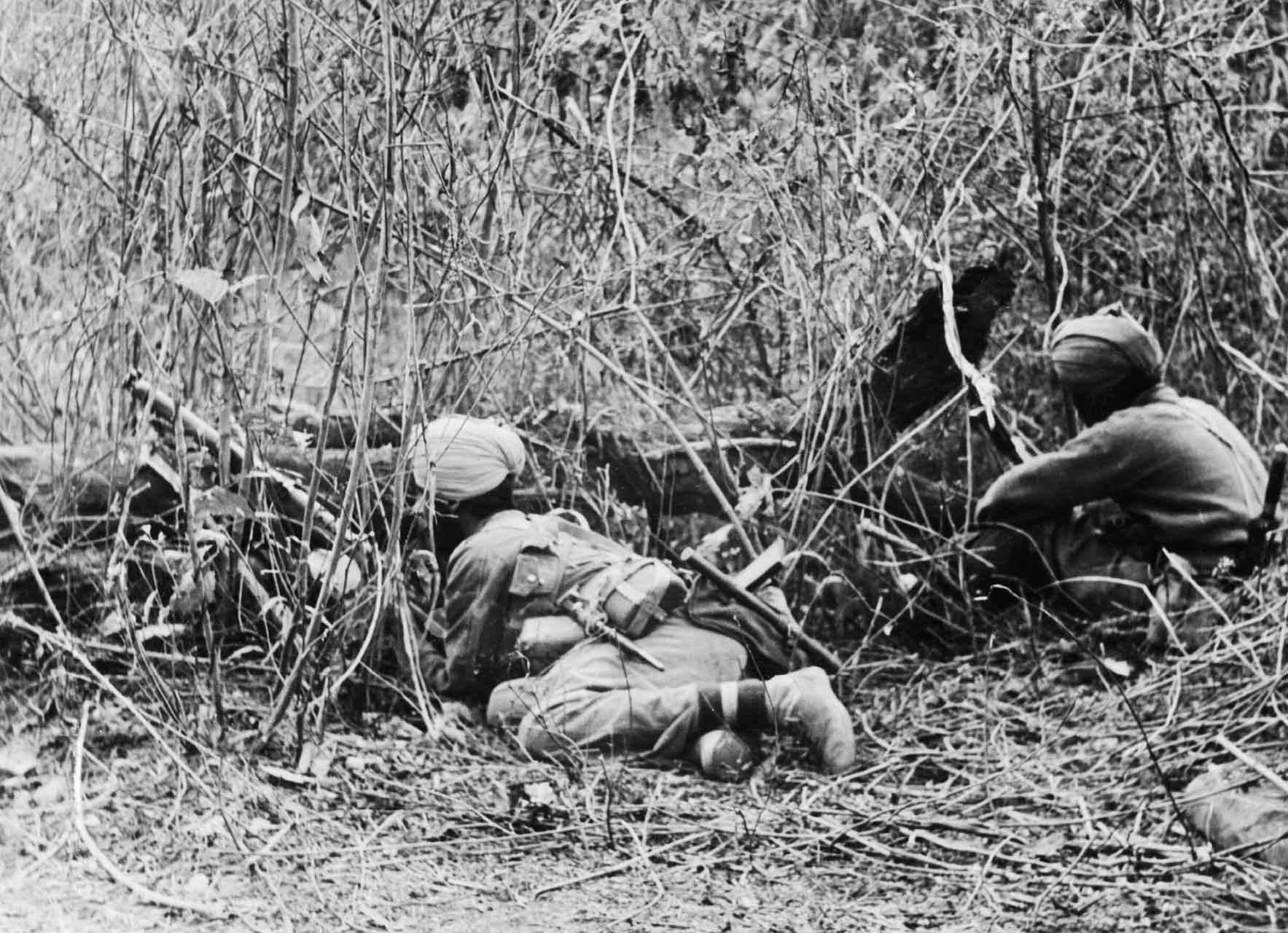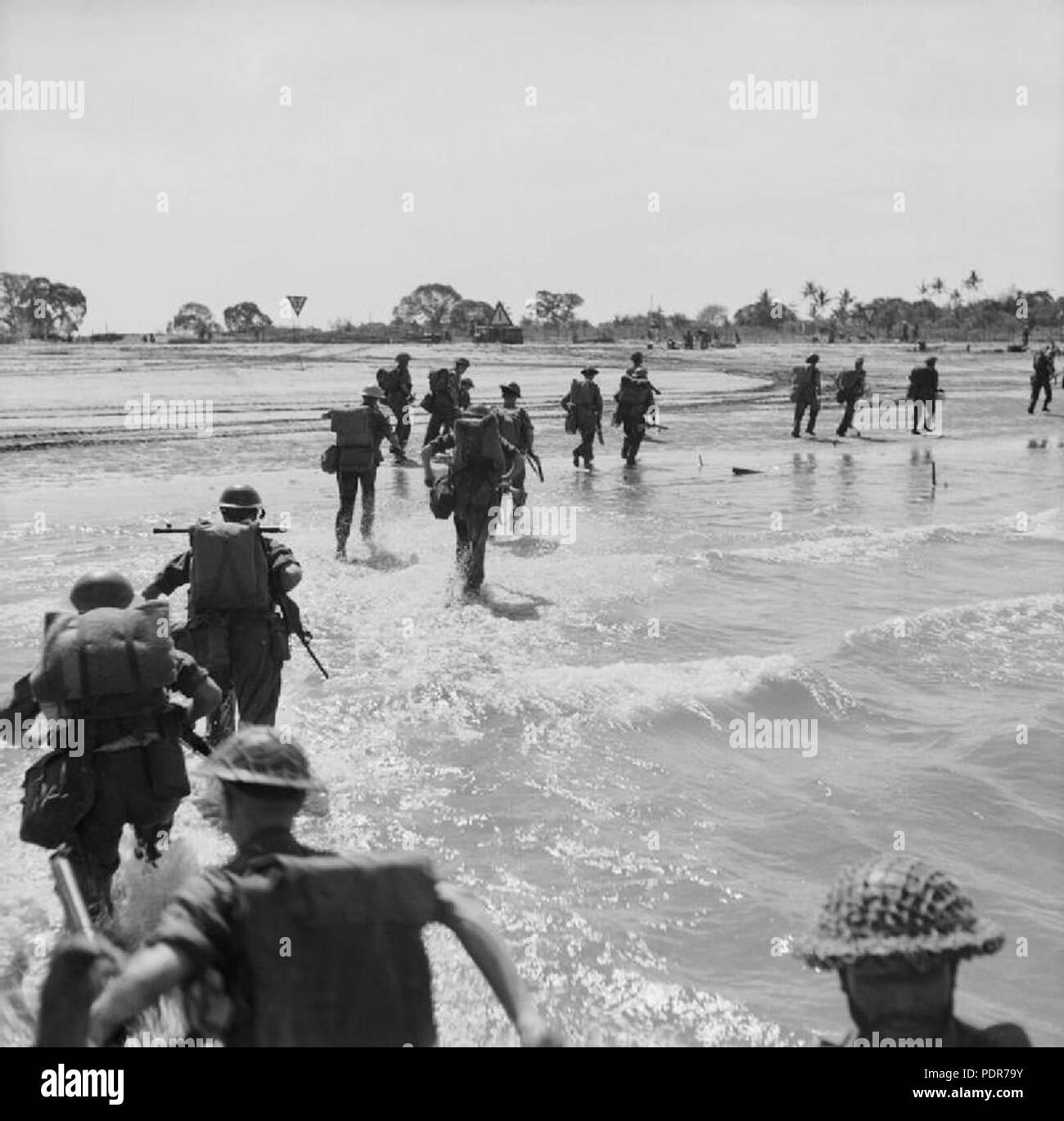Ramree Massacre Ww2 - Off the coast of Rakhine State, Myanmar, formerly known as Burma, is Ramree Island (Ramri Island). The area, which goes by many different names, is more famous for its brutality in one of the most unique battles of World War II than its name. The story of the Ramree island massacre ends with the killing of hundreds of people. Faced with dire circumstances, the Imperial Japanese Army was in such dire straits that it would be between a rock and a hard place.
Ramree Island was found in the middle of the war at the end of WW2. In fighting against the British army, the Japanese army faced a serious problem.
Ramree Massacre Ww2

British forces were seeking air defense near Ramree Island. This could be used to attack Japanese forces, but there were many enemies in the area defending the island.
Il Massacro Di Ramree Island: Truppe Giapponesi Vs Coccodrilli. Tra Leggenda E Realtà.
The Imperial Japanese Army fought for six weeks using thousands of soldiers in a battle that exhausted both sides without making any progress.
But when the British Royal Marines and the Indian 36th Infantry Brigade were able to take advantage of their enemy's position, chaos ensued when the British Marines of the United Kingdom were able to take advantage of their enemy's position.
As a result, the Japanese army will be divided into two groups. The group became a special force of about 1,000 soldiers.
British soldiers were able to arrive and contact the group and asked the Japanese soldiers to surrender. They refused.
A Cacophony Of Hell” — The Terrifying Crocodile Massacre At The Battle Of Ramree Island
Instead, he chose the wrong path that would destroy the group. With no way to regroup, the Japanese soldiers marched 8 kilometers across the desert.
The swamp had everything you'd expect, with dirt and clear surfaces making it impossible to go fast. There was also a crocodile in it.
For this reason, the Allied Powers allowed the group to continue in that direction and wait for undesirable results. The Crocodile massacre at Ramree Island would cost nearly 900 Japanese soldiers their lives.

Southeast Asia and parts of Oceania are known for their wildlife, including the saltwater crocodile. Although people may struggle to get through the desert, to them, it's just another day in the desert.
Sunset On Ramree: History's Deadliest Crocodile Attack
Saltwater and brackish water sources are where you'll find some of the world's largest insects, with males weighing up to 1,000 pounds and 20 feet long.
They are hunters and act cooperatively. Saltwater crocodiles hunt a variety of animals and will eat humans when given the chance.
At night, many of the crocodiles on Ramree Island were able to use their habitat to their advantage. The massacre at Ramree Island was a clear example of this method.
Reports indicate that many people have died in the Ramree Island Massacre. These came from other wild threats, such as snakes, scorpions and mosquitoes.
Ramree Island Black And White Stock Photos & Images
There was also fatigue, weakness and hunger. Some reports say "only" more than 500 die. This means that the survivors of the Ramree Island Massacre can reach 480 by this count.
Whatever the cause of the death, or the number, the indisputable fact is that the bad disease, the harsh environment, and the brutal nature of the war killed several hundred people.
If you're looking to explore this story further, you're in luck, because there's a movie based on the crocodile massacre during World War II.
, this movie starring Glenn Salvage will keep your adrenaline pumping for an hour and a half.
Ramree Banque De Photographies Et D'images à Haute Résolution
The Ramree Island Massacre is a remarkable place in history and can serve as a reminder of the hardships faced by our soldiers. Their sacrifices and dangers are more than facing the enemy, because soldiers face many things. Another reason to be thankful for the US military.
Buddy Blouin is a writer who likes to create documentaries. Outside of important research and blogging, she enjoys making cocktails, cooking and enjoying The Beautiful Game.
War can be scary enough when people are just fighters. Think how much worse it would be if nature got involved. This was the case during the Battle of Ramree Island where more soldiers were killed by saltwater crocodiles than by enemy bullets.
Ramree Island is located off the coast of Burma. It was captured by the Japanese in 1942, but the British Royal Navy decided to recover it. The Battle of Ramree Island began on January 14, 1945. The battle was mostly on the beach for the first few weeks. On February 1, when the British forces captured the Japanese fortress, 900 Japanese soldiers were ordered to leave their positions and join their comrades on the other side of the island. To get there, they have to go through 16km (9.9 mi) of mangrove swamp.
Is The Ramree Island Crocodile Massacre A Myth?
The British remained outside the hill, circling, believing that what awaited their enemy inside was worse than anything the Allied forces could do. The dense forests were a perfect breeding ground for mosquitoes, so it wasn't long before tropical diseases spread among the marines.
It wasn't just disease, mosquitoes and scorpions that lived in the swamp. Most dangerous and terrifying were its largest inhabitants: saltwater crocodiles. Saltwater crocodiles are the largest reptiles in the world. Typical male specimens can reach 5.18 meters in length and 1,000 pounds (453.6 kilograms). It is not surprising that the largest can reach 7 meters (7 meters) and 2,200 pounds (about 1,000 kg). The mangrove forest of Ramree Island became a haven for large and dangerous creatures, and all they had to do was wait for the Japanese soldiers to come to them.
To make matters worse, saltwater crocodiles are usually nocturnal. Imagine you're on fire, having already fought for two weeks non-stop, living in a dense forest, fighting mosquitoes, scorpions and malaria. Then, when it gets dark and you can no longer see the things around you, the crocodiles start to attack.

"That night [February 19, 1945] was so terrifying that every member of the M.L. [start engine] workers tested so far. The crocodiles, alerted by the war cry and the smell of blood, gathered in the trees, lying in the water and eagerly waiting for their next meal. As the tide moved, the crocodiles struck the dead, wounded, and unharmed people trapped in the mud... Shots scattered across the black swamp, accompanied by the screams of the wounded who shook the insects growing in their jaws, and the indifferent sound of Alligators around create a hellish sound that has never come back to earth. In the early morning, the crocodiles came to clean up what the crocodiles had left behind.
The Ramree Island Massacre: When Crocodiles May Have Slaughtered Hundreds Of Japanese Soldiers
In a report to the Lord Commissioners of the Admiralty on 2 May 1945, Captain Eric Bush of the Royal Navy explained how dangerous the barbs were:
"The evils of the Japanese people are an unspeakable danger in the mangrove swamps. Darkness day and night, acres of dense unbroken forest; miles of deep black mud, billions of bees, scorpions, ants and strange insects and - worst of all - crocodiles. There is no food or drinking water anywhere. It is doubtful that when deciding to leave the island, the Japanese people were well aware of the problems that existed. It proved that there are more days due to their resistance. The prisoners released from the mangroves during the operation were found to be half dehydrated and very weak.
The numbers of Japanese people who die from crocodiles range from 500 to 900. Out of about 1,000 Japanese soldiers who started marching through the desert, only about 20 people were taken prisoner. The rest were either killed in battle or ended up in what Wright described as "the cacophony of hell".
The Ramree Island attack has been described as the "worst crocodile disaster in the world" and the "highest number of crocodile deaths". This record has been unchallenged for half a century. However, in recent years, some historians have questioned the true number of crocodile deaths. Therefore, the 2017 edition of the
What Happened To The Lighthouse Of Alexandria?
He added a question after the headline "Worst crocodile in history" to indicate that there were questions about the scale of the attack.
Regardless of the actual number of victims and the killing of crocodiles, the Battle of Ramree Island cannot be denied as one of the most horrific events that anyone has experienced. The saltwater crocodile attacked the island and was one of the animals it created.
Battle of ramree, ramree, massacre ww2, massacre, ramree island burma, ukraine ww2 massacre, ramree island myanmar, ramree island massacre, ramree island map, ramree island crocodile, ramree island ww2, czech massacre ww2
0 Comments